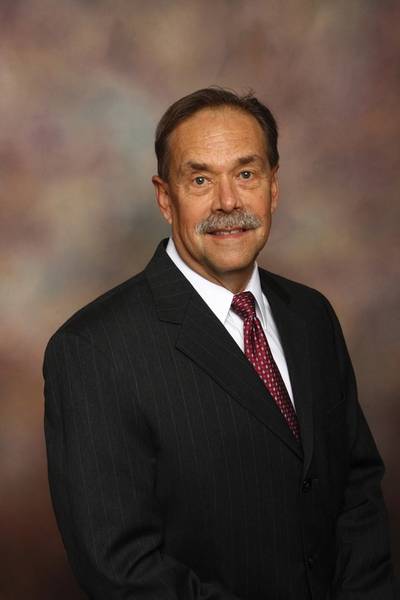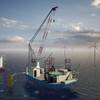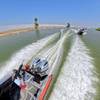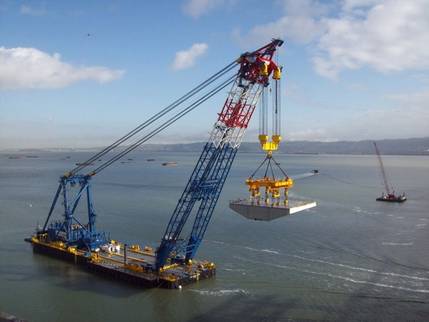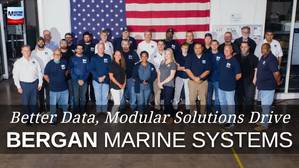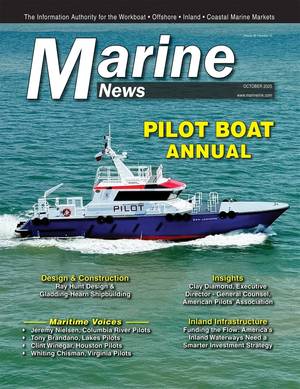Insights: Raymond Lord
President, Donjon-SMIT, LLC
When Raymond Lord was named President of Donjon-SMIT, LLC just over one year ago, the native Houstonian brought with him more than 30 years of experience within the marine salvage industry, and he joins industry heavyweights John Witte and Douglas Martin at the joint-venture, casualty response and compliance group. Coming from his previous position as Vice President and Operations Manager for SMIT Americas in Houston, Lord now heads up one of the largest, and arguably the most visible nationwide marine service providers. Lord’s leadership in this highly technical business involves leveraging the strengths of both SMIT Salvage Americas and Donjon Marine to best serve their diverse client base. This month, Lord weighs in on a raft of subjects for MarineNews readers.
You’ve been at helm of Donjon-SMIT for just over one year now. This is a good time to assess the best attributes of your firm. What distinguishes Donjon-SMIT from its competitors?
Donjon-SMIT’s best attributes are twofold. First, this involves the total commitment of both companies, Donjon Marine as well as SMIT Salvage Americas, to not only provide each vessel owner / operator with the documentation and administration to allow them to operate within US waters in full compliance with OPA90 regulations, but also to allow each owner operator the confidence that in the event of a true emergency incident Donjon-SMIT is fully capable of providing prompt professional service regardless the size and scope of the situation. Secondly, and as is the case with any organization, people are our greatest resource. The staff at DJS as well as both parent companies, Donjon Marine and SMIT Salvage Americas, are highly trained and dedicated to providing the highest quality service to our clients. Backed by years of hands on experience within the maritime industry they provide the key element when responding to an emergency situation.
How does and will Donjon-SMIT interact with those in the U.S. government (Coast Guard, NOAA, etc.) over the next year?
Donjon-SMIT interacts with governmental entities in many ways. Through personal meetings to discuss elements within the industry or full scale emergency response drills and vetting processes, DJS remains in close contact with the various agencies. Over the years, an open relationship has developed and both sides are comfortable discussing not only present state of affairs, but also mutual guidance in further developing the way forward. Working together for many years on many salvage operations has led to a level of cooperation that, today, we value highly.
How has Donjon-SMIT found the promulgated marine firefighting and salvage regulations to be in terms of an overall industry point of view? Have they helped? Could they be improved upon? How?
Although the path in developing the newly founded SMFF regulations has been long and arduous, we believe that it has been a huge step forward to improving the nation’s ability to respond to any emergency salvage situation within US waters. For many years following the Exxon Valdez incident, the focus has been largely upon the oil spill response community and many salvors were able to operate with little or no resources, minimal experience and without the company structure that would enable it to conduct a full scale salvage operation if one had arisen. Those days are behind us with the new regulations. Each responder now is held accountable for their planning, their resources and their ability to react to a serious salvage incident. Vetting processes have been developed and are underway. Drills are now established (although some additional detailed requirements are still being developed) leading to the exposure of not only strengths but weaknesses within the salvage community that can now be addressed and improved upon. As with other regulations, they are work in progress. Each step is seen as an improvement in the salvage response capability within the US and that, in the end, is the true goal.
In what areas are you going to focus on for growth in this year and beyond?
The standard procedure for almost all serious salvage operations is now to remove the threat of pollution whether the vessel is transporting an OPA 90 related cargo or is carrying only bunkers. In this regard we are closely monitoring the upcoming non-tank regulations and looking forward to expanding our client base extensively. Anticipating that once released the new non-tanker regulations will mirror most aspects of the present day SMFF regulations pertaining to tank vessels, we are encouraging present day non-tanker vessel owners to act proactively in the administrative process and enroll their vessels now instead of later.
Tell us about Donjon-SMIT’s joint venture partners and what they each bring to Donjon-SMIT.
Both partners are truly dedicated to the onward success of the Donjon-SMIT joint venture, bringing unique but at the same time complementary assets to the venture. Lifelong competition has been put aside in a spirit of cooperation in order for DJS to reach its goal of providing the very best in emergency response services.
Has the tragedy of the Concordia focused attention on professional marine salvage in the right ways?
The tragedy itself correctly illustrated the readiness, dedication and perseverance of the rescue responders in a potentially very dangerous circumstance. We hold the deepest respect for those dedicated to saving the lives of so many people that night. The salvage operation itself is in its very earliest stages but we remain confident that the salvors will do their best to protect the environment in all ways possible and to remedy this difficult operation in the swiftest and most professional manner.
Your firm’s Compliance Decision Tool claims to “place emergency resources at your fingertips.” Bring the readers up to speed on this unique part of your service package.
Developed over the course of three years, the Compliance Decision Tool (CDT) serves several key functions within our organization. It allows Donjon-SMIT to graphically demonstrate our ability to meet SMFF regulatory planning standards. During an actual response, we can visually illustrate where our personnel, equipment and support craft are located in real time with easily calculable arrival times to any port in the country. As it is the vessel owner/operator’s obligation to ensure that their chosen SMFF provider is capable of fulfilling all regulatory requirements, this tool gives that owner the confidence that Donjon-SMIT was their proper choice.
Tell us a little about your journey – marine salvage and business experience – that culminated in your current post as President of DonJon-SMIT.
After 10 years as a commercial diver in the US Gulf of Mexico, I worked on my first Smit Salvage project in 1984 raising a sunken car ferry in Mazatlan, Mexico. At that moment, I left the oil field of Louisiana for the international world of salvage diving. Working through the ranks within SMIT gave me the opportunity to apply my extensive field experience to the many other business functions within the organization. From Safety, Quality, OPA 90, Commercial, and finally Operations Management I approached each step as an opportunity and a privilege afforded to very few people, for which I remain grateful.
(As published in the November 2012 edition of Marine News - www.marinelink.com)



